Citrix Hypervisor vs Red Hat Virtualization
July 25, 2023 | Author: Michael Stromann
10
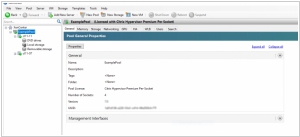
Citrix Hypervisor (formerly Citrix XenServer) is a leading virtualization management platform optimized for application, desktop and server virtualization infrastructures. Consolidation and containment of workloads on Citrix Hypervisor enables organizations of any vertical or size to transform their business IT compute infrastructures.
7
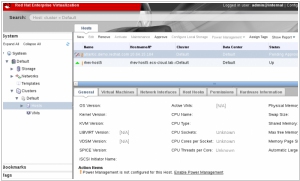
Red Hat Virtualization is an open, software-defined platform that virtualizes Linux and Microsoft Windows workloads. Built on Red Hat Enterprise Linux and the Kernel-based Virtual Machine (KVM), it features management tools that virtualize resources, processes, and applications—giving you a stable foundation for a cloud-native and containerized future.
Citrix Hypervisor (formerly known as Citrix XenServer) and Red Hat Virtualization are two robust virtualization platforms that offer distinct features and functionalities. Citrix Hypervisor is a commercial virtualization solution that leverages the XenServer hypervisor to provide high performance and scalability. It offers advanced features like live migration, high availability, and GPU virtualization, making it well-suited for both desktop and server virtualization needs. Citrix Hypervisor is commonly used in virtual desktop infrastructure (VDI) environments and is preferred by organizations seeking a virtualization platform with extensive management capabilities and integration with Citrix's suite of virtualization and application delivery solutions.
On the other hand, Red Hat Virtualization (RHV) is a commercially-supported virtualization platform built on KVM (Kernel-based Virtual Machine). It offers advanced virtualization management features, such as live migration, high availability, and centralized management through the Red Hat Virtualization Manager. RHV is designed to provide a cost-effective and flexible virtualization solution for Linux-based environments. It offers seamless integration with the Red Hat ecosystem, making it a preferred choice for organizations that prioritize open-source technologies and enterprise-grade support.
See also: Top 10 Virtualization platforms
On the other hand, Red Hat Virtualization (RHV) is a commercially-supported virtualization platform built on KVM (Kernel-based Virtual Machine). It offers advanced virtualization management features, such as live migration, high availability, and centralized management through the Red Hat Virtualization Manager. RHV is designed to provide a cost-effective and flexible virtualization solution for Linux-based environments. It offers seamless integration with the Red Hat ecosystem, making it a preferred choice for organizations that prioritize open-source technologies and enterprise-grade support.
See also: Top 10 Virtualization platforms
Citrix Hypervisor vs Red Hat Virtualization in our news:
2015. Citrix acquired data storage virtualization startup Sanbolic
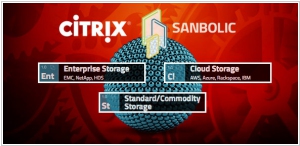
Virtualization leader Citrix has recently acquired Sanbolic, a specialized provider of virtual storage optimization services. This strategic move fills a crucial gap in Citrix's virtualization product portfolio, strengthening its overall offering. Sanbolic has a strong synergy with Citrix's desktop virtualization technology and was already regarded as a valuable partner prior to the acquisition, making this deal a logical step forward. By joining forces with Sanbolic, Citrix gains access to a unique set of capabilities, notably the ability to create software-defined storage pools and efficiently distribute storage across networks, even in situations where the nodes are geographically dispersed. This acquisition enhances Citrix's ability to deliver advanced virtualization solutions, further solidifying its market position.
2014. Citrix Receiver for Chrome becomes more business-ready
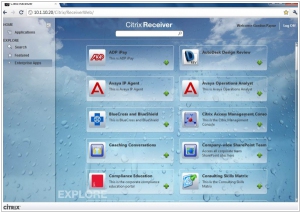
Google and Citrix have collaborated on a new release of the Citrix Receiver for Chrome, aiming to attract more businesses to Google's Chrome OS platform. The updated Receiver enables users to access their virtual apps and desktops through XenDesktop and XenApp on various devices such as smartphones, tablets, PCs, and Macs. With enhanced compatibility with Chrome OS, Receiver for Chrome now allows seamless utilization of Google Cloud Print. Moreover, improvements have been made to ensure better functionality of audio and video playback. Additional features encompass integration with Chrome OS's clipboard across local and remote applications, as well as monitoring capabilities through HDX Insight and support for direct SSL connections.
2007. Citrix to buy virtualization company XenSource
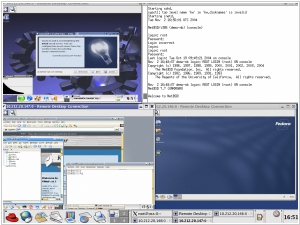
Citrix, a leading provider of thin client software for delivering business applications from servers to desktop computers, has recently completed the acquisition of XenSource, an open-source virtualization company, for approximately $500 million. This strategic move enables Citrix to expand its presence into the server and desktop virtualization market. XenSource offers a powerful open-source "hypervisor" software called Xen, which enables a single computer to simultaneously run multiple operating systems. This technology is particularly beneficial for replacing traditional servers with a more efficient, consolidated computing solution. XenSource's commercial offering, XenEnterprise, is built upon the Xen software platform. Virtualization has emerged as a highly sought-after technology in the IT industry as it empowers corporate customers to optimize their computing resources by consolidating numerous computing tasks onto fewer physical machines. Notably, VMware, the current market leader in virtualization, recently went public, experiencing a significant surge in its stock price, rising from $29 (its offering price) to $51.



